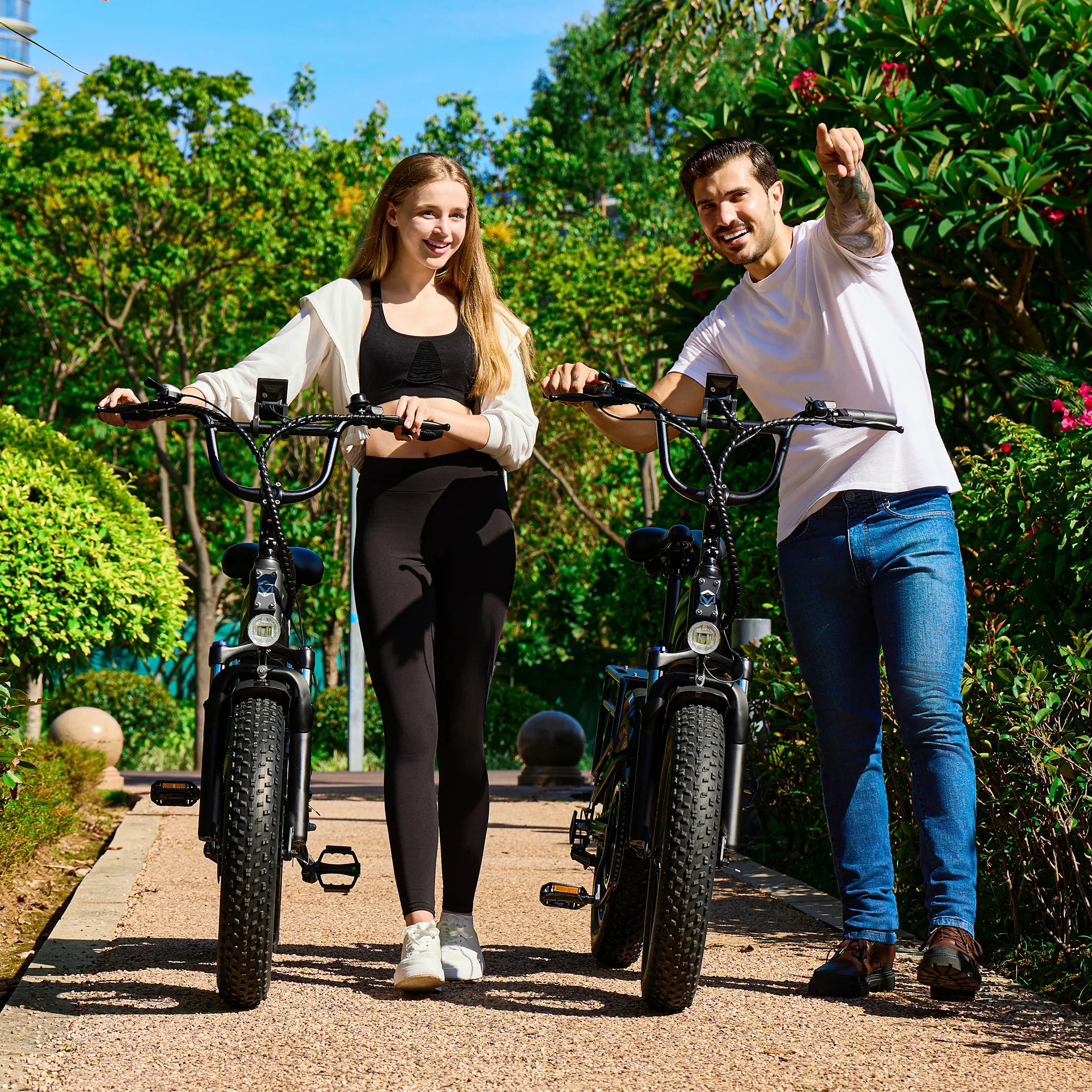City commuting often feels like an endless hassle: public transit runs late or gets too crowded, walking leaves you breathless for long distances, and cars trap you in gridlock. Traditional bikes help, but they fall short when hills or bad weather hit. That’s where e-bikes step in—they blend the flexibility of cycling with electric assist, turning tedious commutes into smooth, even enjoyable rides. Let’s break down why e-bikes are a go-to for urban dwellers, focusing on the practical benefits that matter most for European cities.
Rush hour turns roads into parking lots: cars average just 8–16 km/h during peak times, creeping as you watch the clock ticks. E-bikes keep a steady 24–32 km/h—no traffic jams holding you back. You can zip through dedicated bike lanes, take car-free shortcuts (narrow alleyways, pedestrian plazas), and climb hills without slowing down.
A 10 km commute? A car might take 30–45 minutes on a bad day; an e-bike gets you there in 20–25 minutes, every time. No more leaving 20 minutes early to avoid being late, or texting your boss “stuck in traffic” week after week.
Cars demand time and money to park—circling blocks, 15–40 € daily in busy centers like Berlin or Paris, or worrying about pricey tickets. E-bikes fit easily in bike racks outside offices, under desks, or in apartment hallways. Most parking is free, and you’ll never come back to a dent or a fine waiting for you.
For anyone who’s spent 15 minutes hunting for a spot just for a 10-minute errand, this is a huge relief. E-bikes turn “parking” into a 30-second task, no hassle required.
The financial weight of car ownership is easy to overlook—until you add up fuel, insurance, maintenance, and parking. As the U.S. Bureau of Transportation Statistics’ vehicle cost report notes, owning a car costs thousands of dollars yearly; e-bikes are a bargain by contrast.
Charging an e-bike costs pennies per ride (even with rising energy prices), maintenance is minimal (no oil changes or expensive repairs), and there’s no annual insurance or registration fee. The upfront cost of an e-bike is a fraction of a car’s, with annual savings easily topping 500 €.
Cars pump out emissions, add noise, and clog roads—e-bikes do the opposite. They run on rechargeable batteries (far less pollution than petrol-powered vehicles), stay quiet (no engine roars disrupting neighborhoods), and take up barely any road space, easing congestion for everyone.
Small swaps matter: ride an e-bike to work 3 days a week instead of driving, and you’ll cut your carbon footprint significantly. It’s a simple, planet-friendly choice that doesn’t mean sacrificing convenience.
One common myth: “E-bikes aren’t exercise.” But they’re perfect for staying active without the exhaustion of traditional cycling. Electric assist eases hills and long stretches, so you still pedal (boosting your heart rate) but don’t arrive at work sweaty or sore.
They’re low-impact too—gentle on joints for those recovering from injury, living with arthritis, or just starting to build up activity levels. And the mental boost? Skipping traffic stress beats fuming in a car; riding an e-bike lets you start your day calmly and focusedly.
Pick one that matches how you travel—so you get the most out of every ride:
-
Urban/City E-Bikes: Upright design, fenders (for rainy days), lights (for dawn or dusk), and racks (for laptop bags or groceries). Great for 5–20 km commutes on streets or bike paths—ideal for office workers and errand-runners.
-
Electric Mountain Bikes: Wide, grippy tires, suspension (to handle bumps), and strong motors (to tackle steep hills). Perfect for commutes with dirt paths, gravel, or hilly terrain—plus they work great for weekend trail rides.
-
Electric Road Bikes: Lightweight, narrow tires, and a streamlined design. Speedy for 20+ km commutes (like suburb-to-city commutes) without leaving you tired.
-
Folding E-Bikes: Compact enough to carry on trams or trains—ride to the station, take public transit, then ride to your office. No more “last-mile” walks or waiting for buses.
-
Electric Cargo Bikes: Extended frames and sturdy racks (for hauling groceries, kids, or work gear). Strong motors handle extra weight, making them a practical car replacement for parents or anyone needing to carry more.
Urban commuting doesn’t have to be a battle. E-bikes turn it into something better: faster, cheaper, greener, and healthier. They’re not a trend—they’re a practical tool for anyone tired of the stress of cars, buses, or traditional bikes in European cities.
Once you skip traffic, park in 30 seconds, and arrive at work calmly and on time, you’ll wonder how you ever commuted without one.















Leave a comment
This site is protected by hCaptcha and the hCaptcha Privacy Policy and Terms of Service apply.